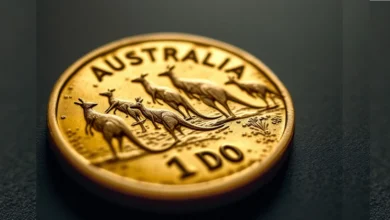Coin Silver Coins: A Comprehensive Guide

Introduction to Coin Silver Coins
Coin silver coins are a fascinating segment of numismatics, combining historical significance, artistic craftsmanship, and investment value. These coins, primarily made of silver, have been used in various cultures and periods as a medium of exchange, a representation of wealth, and a collector’s item. In this article, we will explore the history, types, value, and significance of coin silver coins, offering a deep dive into this captivating subject for collectors, historians, and investors alike.
Understanding Coin Silver
Definition of Coin Silver
Coin silver refers to a specific standard of silver content used in coins, jewelry, and other silver items. Traditionally, coin silver is composed of 90% silver and 10% copper, providing durability while maintaining the aesthetic qualities of silver. This standard was prevalent in the United States before the introduction of the .999 fine silver standard, which denotes 99.9% pure silver.
Historical Background
The term “coin silver” dates back to the 19th century in the U.S., where it was used to describe the silver content in coins minted before the Coinage Act of 1873. This act established the U.S. dollar as the standard unit of currency and regulated the composition of coins. Before this, various silver coins circulated, including Spanish dollars and other foreign coins, which influenced the American coinage system.
The Coinage Act of 1873
The Coinage Act of 1873 was a pivotal moment in American financial history. It established the metric system for weights and measures in coinage and defined the silver dollar as the standard unit of money. This act also discontinued the free coinage of silver, leading to the eventual demonetization of silver coins. While it marked the decline of coin silver as a standard, it also set the stage for the modern coinage system we know today.
Types of Coin Silver Coins
1. Pre-Modern Coin Silver Coins
Before the establishment of the U.S. mint, many silver coins were struck by foreign governments and circulated in America. Notable examples include:
- Spanish Dollar: Widely used in the Americas, this coin was made of 90% silver and had a significant influence on U.S. coinage.
- French and British Coins: These coins also circulated widely and were often accepted based on their silver content.
2. U.S. Coin Silver Coins
The U.S. mint has produced various coin silver coins throughout its history. Some key examples include:
- Seated Liberty Dollar (1836-1873): Featuring a seated figure of Liberty, this coin was minted in 90% silver and has become a popular collectible.
- Barber Coinage (1892-1916): Designed by Charles E. Barber, this series includes the dime, quarter, and half-dollar, all made of 90% silver.
- Walking Liberty Half Dollar (1916-1947): One of the most beautiful coins ever minted, it features a walking Liberty and is highly sought after by collectors.
3. Modern Silver Coins
In recent years, coin silver coins have taken on new forms, often produced for collectors and investors. Notable examples include:
- American Silver Eagle (1986-present): The official silver bullion coin of the U.S., this coin contains one troy ounce of .999 fine silver, making it a popular investment choice.
- Canadian Silver Maple Leaf (1988-present): Known for its purity, this coin contains 1 troy ounce of .9999 fine silver and is recognized worldwide.
The Value of Coin Silver Coins
Factors Affecting Value
The value of coin silver coins can fluctuate based on several factors:
- Silver Content: The intrinsic value of the silver in the coin is a primary factor. As silver prices rise and fall, so does the value of the coin.
- Rarity: Coins that were minted in limited quantities or that have survived in excellent condition are typically worth more.
- Condition: The state of the coin, graded on a scale from Poor to Mint State, significantly impacts its value. Coins in better condition command higher prices.
- Demand: Market demand among collectors and investors can influence prices. Popular coins or those with historical significance often see increased demand.
How to Determine the Value of Coin Silver Coins
Assessing the value of your coin silver coins is an essential step for collectors, investors, and anyone looking to sell or trade their coins. The value can vary significantly based on several factors, including the coin’s condition, rarity, and market demand. Here’s a detailed guide on how to determine the value of your coin silver coins effectively.
1. Conduct Thorough Research
The first step in determining the value of your silver coin is to conduct thorough research. This involves utilizing various resources to gain insights into the current market value of specific coins. Here are some effective methods:
- Online Databases: Websites dedicated to numismatics often provide up-to-date pricing information and historical data on coin values. These platforms can help you understand the market trends and fluctuations in value.
- Price Guides and Catalogs: Reference books and price guides, such as the “Red Book” (A Guide Book of United States Coins), offer detailed information on coin values based on their condition and rarity. These guides are invaluable for both novice and experienced collectors.
- Auction Results: Reviewing recent auction results can provide a clear picture of what similar coins have sold for. This information can help you gauge the current market demand and set realistic expectations for your coins.
2. Consult Experts
Engaging with professionals in the field can provide you with accurate and reliable assessments of your coin silver coins. Here are some ways to connect with experts:
- Numismatists: Professional numismatists have extensive knowledge and experience in evaluating coins. They can provide detailed appraisals based on the coin’s condition, rarity, and marketability.
- Reputable Coin Dealers: Established coin dealers can offer insights into the current market trends and help you understand the value of your coins. They often have access to resources and networks that can provide a more comprehensive evaluation.
- Local Coin Clubs: Joining a local coin club can connect you with fellow collectors and experts who can share their knowledge and experiences. These clubs often host events and meetings where you can learn more about coin valuation.
3. Use Grading Standards
Understanding coin grading standards is crucial for accurately assessing the condition of your coins, which directly impacts their value. The Sheldon Scale is the most commonly used grading system in the U.S. Here’s how it works:
- Sheldon Scale: This scale ranges from 1 to 70, with 70 representing a perfect coin. Coins are graded based on their appearance, including factors such as wear, lustre, and any imperfections. Familiarizing yourself with this scale will help you determine the grade of your coins and their corresponding market value.
- Professional Grading Services: If you have valuable coins, consider sending them to a professional grading service, such as the Professional Coin Grading Service (PCGS) or Numismatic Guaranty Corporation (NGC). These organizations provide expert grading and encapsulation, which can enhance the coin’s marketability and value.
4. Understand the Factors Affecting Value
Several key factors influence the value of coin silver coins. Being aware of these factors can help you make informed decisions regarding buying, selling, or trading your coins:
- Silver Content: The intrinsic value of the silver in the coin is a primary consideration. Coins made of 90% silver, such as pre-1965 U.S. dimes, quarters, and half dollars, have a base value tied to the current market price of silver.
- Rarity: Coins that were minted in limited quantities or that have unique characteristics (such as mint errors) are often more valuable. Researching the mintage figures and historical significance of your coins can provide insights into their rarity.
- Condition: The condition of the coin, as determined by grading standards, significantly impacts its value. Coins in better condition (higher grades) are generally worth more than those with visible wear and damage.
- Market Demand: The demand for specific coins can fluctuate based on trends in the collecting community. Popular coins or those with historical significance often see increased demand, which can drive up their value.
Determining the value of coin silver coins requires a combination of research, expert consultation, and an understanding of grading standards. By following these steps, you can gain a clearer picture of your coins’ worth and make informed decisions about your collection. Whether you are a seasoned collector or just starting, being knowledgeable about the value of your coin silver coins can enhance your experience in the fascinating world of numismatics.
Collecting Coin Silver Coins
Why Collect Coin Silver Coins?
Collecting coin silver coins can be a rewarding hobby for several reasons:
- Historical Significance: Each coin tells a story, reflecting the period in which it was minted and the socio-economic conditions of that time.
- Investment Potential: Coin silver coins can be a sound investment, especially if you focus on rare or high-demand pieces.
- Artistic Value: Many coins feature intricate designs and craftsmanship, making them appealing from an artistic perspective.
Tips for New Collectors
If you’re starting your collection of coin silver coins, consider the following tips:
- Start Small: Begin with coins that interest you and fit your budget. As you gain experience, you can expand your collection.
- Join a Community: Engage with fellow collectors through clubs, forums, and social media groups. Sharing knowledge and experiences can enhance your understanding of the hobby.
- Attend Shows and Auctions: Coin shows and auctions provide opportunities to buy, sell, and trade coins while gaining insight into the market.
Storage and Preservation
Proper storage and preservation of your coin silver coins are crucial to maintaining their condition and value. Here are some best practices:
- Use Protective Holders: Store coins in protective holders or capsules to prevent scratches and exposure to air.
- Avoid Cleaning: Cleaning coins can damage their surfaces and reduce their value. If necessary, consult with a professional conservator.
- Control Environment: Keep coins in a controlled environment, avoiding extreme temperatures and humidity levels that can cause damage.
Investing in Coin Silver Coins
Silver as an Investment
Silver has long been regarded as a safe-haven asset, particularly during economic uncertainty. Investing in coin silver coins offers several advantages:
- Tangible Asset: Unlike stocks or bonds, silver coins are physical assets you can hold and store.
- Hedge Against Inflation: Silver has historically retained its value during inflationary periods, making it a popular choice for protecting wealth.
- Liquidity: Coin silver coins can be easily bought and sold, providing liquidity in times of need.
Strategies for Investing in Coin Silver Coins
Investing in coin silver coins can be both rewarding and exciting, but it requires careful consideration and strategy. Here are some detailed strategies to enhance your investment journey:
1. Focus on Quality
Investing in high-quality silver coins is paramount for long-term success. Here’s why quality matters:
- Grading: Coins are graded on a scale from 1 to 70, with higher numbers indicating better condition. Aim for coins graded MS (Mint State) or PR (Proof), as these are more likely to appreciate in value over time. Coins in excellent condition retain their aesthetic appeal and are often sought after by collectors.
- Preservation: Proper storage techniques, such as using coin holders or airtight containers, protect coins from damage. Avoid cleaning coins, as this can diminish their value. Always handle coins with care, using gloves to prevent oils from your fingers from tarnishing the surface.
- Provenance: Research the history and background of specific coins. Coins with a well-documented provenance can fetch higher prices in the market. Always prioritize coins from reputable dealers or established auction houses to ensure authenticity and quality.
2. Diversify Your Portfolio
Diversification is a key investment strategy that can help mitigate risk:
- Types of Coins: Consider investing in a variety of silver coins, including:
- Bullion Coins: These are typically the most straightforward investment. They are valued primarily for their silver content. Examples include the American Silver Eagle and the Canadian Maple Leaf.
- Numismatic Coins: These coins can have added value based on rarity, historical significance, and collector demand. Research popular numismatic coins and their market trends to identify potential investment opportunities.
- Antique and Historical Coins: These can add uniqueness to your collection and may be appreciated significantly due to their historical context and rarity.
- Market Segments: Allocate your investments across different market segments. For example, consider including coins from various geographical regions or different eras. This strategy not only spreads risk but also exposes you to potential growth areas in the silver market.
3. Stay Informed
The precious metals market is dynamic and influenced by various factors. Staying informed can significantly enhance your investment decisions:
- Market Trends: Regularly monitor silver prices and market trends through financial news outlets and precious metals websites. Understanding the economic indicators that affect silver prices, such as inflation rates, geopolitical events, and currency fluctuations, can help you make timely investment decisions.
- News and Developments: Stay informed about developments within the coin-collecting community and the broader precious metals market. Changes in regulations, significant auctions, or new coin releases can impact demand and pricing.
- Join Communities: Engage with online forums, social media groups, and local coin clubs to exchange insights and learn from experienced investors. These communities can offer valuable tips, updates on market conditions, and opportunities to buy or sell coins.
- Educational Resources: Consider investing time in educational resources such as books, webinars, and courses focused on coin collecting and investing. Understanding grading systems, market dynamics, and historical contexts will bolster your confidence as an investor.
By implementing these strategies—focusing on quality, diversifying your portfolio, and staying informed—you can build a robust investment strategy in silver coins. This approach not only helps you navigate the complexities of the market but also enhances the potential for long-term growth and satisfaction in your investment journey.
Conclusion
Coin silver coins represent a unique intersection of history, artistry, and investment potential. From their origins in ancient civilizations to their status as modern collectables, these coins offer a glimpse into the past while providing opportunities for future gains. Whether you’re a collector, investor, or history enthusiast, understanding coin silver coins can enhance your appreciation for this fascinating aspect of numismatics.
By exploring the rich tapestry of coin silver coins, we gain insight into the cultures that produced them, the economic forces that shaped their value, and the enduring appeal they hold for generations of collectors and investors. Embrace the journey into the world of coin silver coins, and you may find that it is not just about the coins themselves but the stories and experiences they represent.
Frequently Asked Questions (FAQs)
Which coins are silver coins?
Silver coins are typically defined as coins that contain a significant amount of silver in their composition. Historically, many coins were minted using silver, including:
- U.S. Silver Coins: Before 1965, U.S. dimes, quarters, and half dollars were made of 90% silver. Notable examples include the Walking Liberty half dollar and the Mercury dime.
- Modern Silver Bullion Coins: Coins like the American Silver Eagle, which contains one troy ounce of .999 pure silver, and the Canadian Silver Maple Leaf, known for its .9999 purity, are popular among collectors and investors today.
- Ancient Coins: Coins such as the Greek drachmas and Roman denarii were also made of silver and are considered historical silver coins.
Is coin silver real?
Yes, coin silver is real. The term “coin silver” traditionally refers to silver used in coin minting. In the United States, coin silver typically denotes coins made of 90% silver and 10% copper, which was the standard for many U.S. coins minted before 1965. While the term can also refer to silver items made from melted coins, it is important to note that the actual silver content in these items may vary.
How much is coin silver worth today?
The value of coin silver can fluctuate based on the current market price of silver, which is influenced by various economic factors. As of now, the melt value of U.S. silver coins (those made before 1965) is primarily determined by the silver content. For example, a silver quarter (90% silver) typically has a melt value that reflects the current price of silver per ounce. To get an accurate estimate, you can check online melt value calculators or consult with a reputable coin dealer for the latest pricing.
Can we sell silver coins?
Yes, you can sell silver coins. There are several avenues for selling silver coins, including:
- Coin Dealers: Reputable coin dealers can provide appraisals and purchase your coins directly.
- Online Marketplaces: Websites like eBay or specialized numismatic platforms allow you to list your coins for sale to a broader audience.
- Coin Shows and Auctions: Participating in coin shows or auctions can also be a great way to sell your coins, often attracting serious collectors and investors.
What factors influence the value of silver coins?
Several factors can influence the value of silver coins, including:
- Silver Content: The intrinsic value of the silver itself is a significant factor. Coins with higher silver content (e.g., .999 or .9999 fine silver) generally have a higher value based on the current market price of silver.
- Rarity: Coins that were minted in low quantities or have unique features, such as mint errors or historical significance, tend to be more valuable.
- Condition: The condition of the coin plays a critical role in its value. Coins are graded on a scale (such as the Sheldon Scale), and those in better condition (higher grades) are usually worth more.
- Market Demand: Collectors’ and investors’ demand can fluctuate over time, impacting the value of specific coins. Popular coins or those tied to significant historical events often see higher demand.
How can I store my silver coins to maintain their value?
Proper storage is essential to preserve the condition and value of your silver coins. Here are some tips for storing them:
- Use Protective Holders: Store coins in protective capsules, holders, or albums to prevent scratches, tarnishing, and exposure to air and moisture.
- Avoid Cleaning: Do not clean your coins, which can cause scratches and diminish their value. If necessary, consult a professional for conservation.
- Control Environment: Keep coins in a stable environment, avoiding extreme temperatures and humidity. Ideally, store them in a cool, dry place to prevent oxidation and tarnishing.
- Handle with Care: When handling coins, use cotton gloves to avoid transferring oils from your fingers, which can affect their appearance over time.




